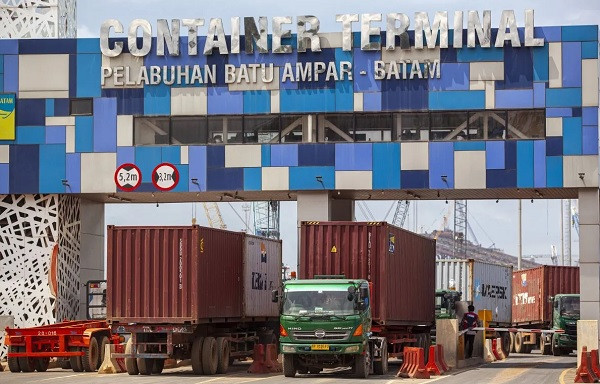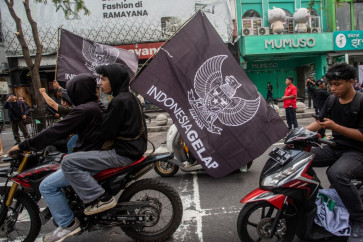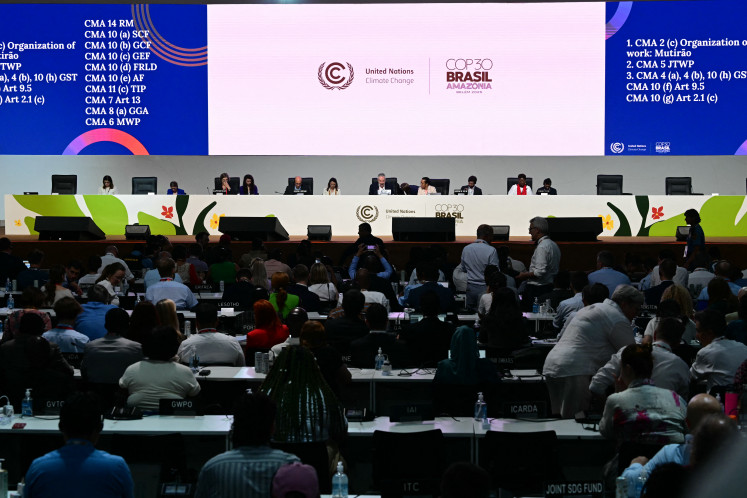Popular Reads
Top Results
Can't find what you're looking for?
View all search resultsPopular Reads
Top Results
Can't find what you're looking for?
View all search resultsRI cannot solve US deficit
Washington needs to entice Indonesian investors to their country, but the threatening tone is likely to achieve the opposite.
Change text size
Gift Premium Articles
to Anyone
Concessions we offered to the United States to avoid steep US import tariffs have yielded nothing but embarrassment.
In an open letter addressed to President Prabowo Subianto on Monday, US President Donald Trump doubled down on his threat to impose a 32 percent duty on Indonesian exports.
He graciously gave us until Aug. 1 to try and avert that by, somehow, redirecting bilateral trade and investment flows to favor the US.
But after a three-month negotiation deadline offered by Washington earlier passed without a deal, what are the odds that a few more weeks will make any difference?
If a nonchalant stock market is any indication, Trump’s latest warning has changed nothing.
We have proposed to reduce import tariffs for US goods, to purchase more US exports like fuel, soybean and Boeing aircraft and to facilitate the operations of American companies operating here through deregulation, including lowering our local content requirements.
None of that seems to have impressed Washington, and Jakarta must ask itself whether its response to the announcement of the US tariffs back in April was appropriate.
Maybe a more assertive stance would have worked better. We now have until the end of the month to try that.
A more assertive stance could be taken by insisting on agreed global economic principles, whereby any curbs on cross-border trade must be in line with World Trade Organization rules and investment decisions should not be forced.
This could be communicated to the US side, along with a critical self-assessment, because some of our protectionist policies may be out of line with those principles as well, but that does not give Washington the right to impose exorbitant import duties across the board.
The US cannot blame Indonesia, or any other country, for its national trade deficit, because that deficit is squarely the result of an economic model pursued by Washington for decades.
The status of the dollar as the dominant global reserve currency, which successive US administrations have actively reinforced, ensured strong demand for Treasury bonds and hence low borrowing costs, allowing America to live beyond its means by running up large trade deficits.
That model worked well for decades, fueling consumption in the US and production elsewhere, but its viability is increasingly in doubt, because the growing US debt pile is causing global investors to search elsewhere for more stable returns, and the weaponization of the dollar as a geopolitical tool is hurting demand.
“The country is going bankrupt. If we don’t take action, the dollar’s going to be worth nothing,” Elon Musk told podcaster Joe Rogan in November last year, weeks before becoming a senior advisor to the Trump administration with a focus on cutting government costs.
With its protectionist tariff and extortionate investment policies, the Trump administration is trying to reiterate the economic playbook of industrialization by increasing domestic production, a colossal undertaking that is not without risks.
But what does Indonesia have to do with any of that?
In his letter to Prabowo, which resembled letters sent to numerous other world leaders, Trump said there would be “no tariff if Indonesia, or companies within [Indonesia], decide to build or manufacture products within the United States.”
Aside from the fact that the letter fails to specify how much investment would be needed to satisfy that requirement, any such decision would be up to Indonesian businesspeople, not the government.
Washington would need to entice them to invest, but the threatening tone is likely to achieve the opposite. It may compel local companies that are keen to expand their footprint abroad to look to other markets rather than the US.
Besides, we do not have many of the industries the US covets. Trump himself said in May that his tariff policy was aimed at promoting the domestic manufacturing of tanks and technology, not sneakers and T-shirts, as Reuters reported.
We cannot solve the US debt or deficit problems. We have enough economic issues of our own to deal with.











